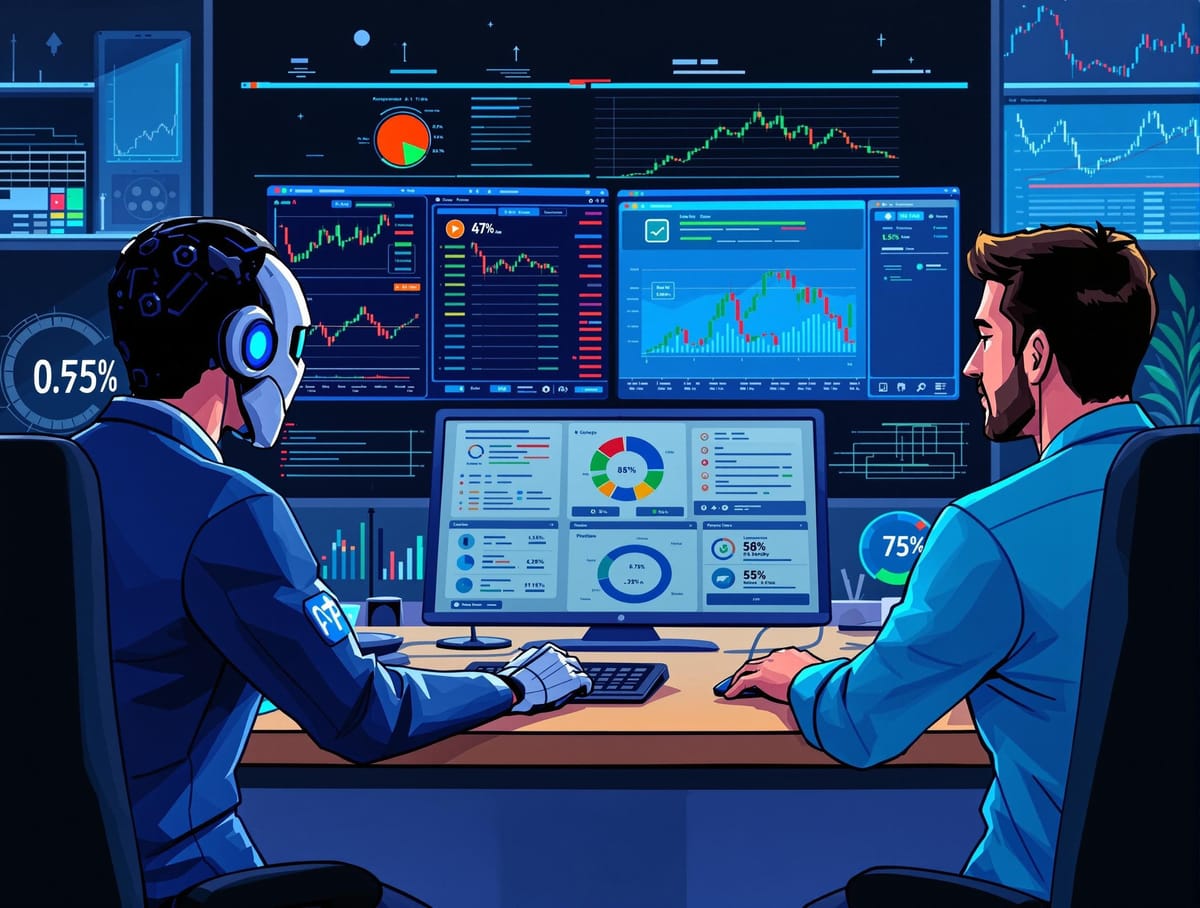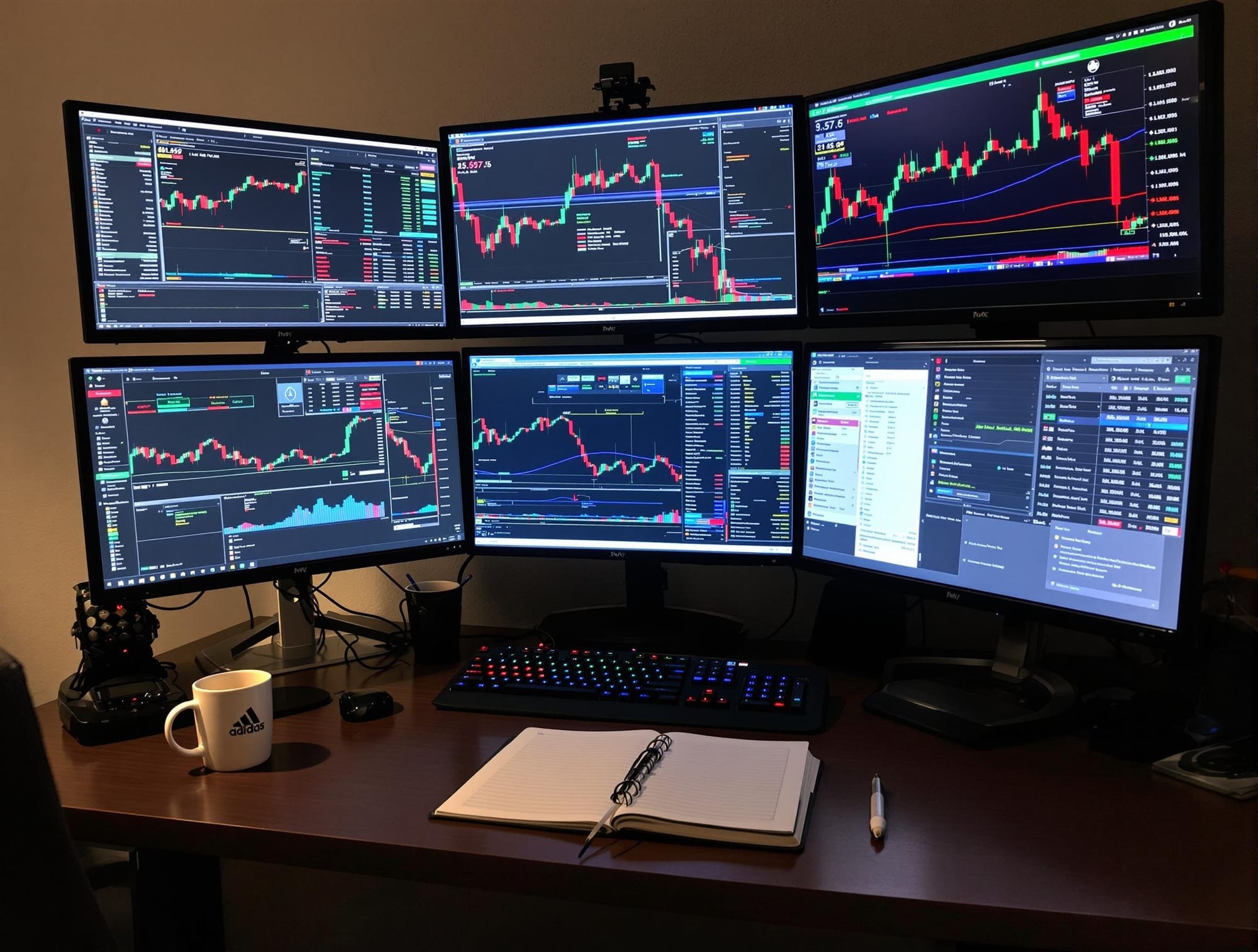How to Navigate Trading Software for Beginners

Trading can be an exhilarating experience, especially for beginners. However, how to navigate trading software can often be overwhelming. The plethora of information, alongside various platforms and tools, can leave newcomers feeling lost. This guide aims to simplify that journey by breaking down essential aspects of trading software into easy-to-understand sections. Whether you’re looking for the best trading app for beginners or you’re just exploring trading for beginners, understanding the software will steer you toward smarter trading strategies.
Comprehending the use of trading software is crucial. It not only helps in executing trades but also in analyzing market trends, managing risks, and developing trading strategies. Moreover, with numerous platforms offering different features, knowing how to effectively utilize these tools can significantly influence your trading success. For additional insights into the fundamentals of trading, check out our FAQ section where we delve into various trading methodologies.
What Is Trading Software and Why Does It Matter?
Trading software refers to tools designed to assist traders in executing trades and managing their investment portfolios efficiently. It matters significantly because the right trading software can enhance decision-making processes and allows traders to access crucial data quickly. This is important in day trading setup as the market can change rapidly. They can vary from simple applications to complex systems with advanced analytics.
Why Good Software Can Make or Break Your Strategy
The software you choose will directly impact your trading performance. For instance, a beginner might feel lost using an overly complex platform packed with features they do not need yet. In contrast, a good trading platform will not only allow you to trade effortlessly but will also provide insightful analytics. The best day trading platform typically includes user-friendly interfaces, informative charts, and reliable technical indicators. This is essential because a good strategy needs precise execution—any delay or complexity can lead to missed opportunities or increased losses.
Choosing the Best Platform to Start With
Choosing the right platform as a beginner can feel daunting, but understanding your needs and preferences is key. For those just starting, it's crucial to select a platform that aligns with your trading style and goals. Look for user-friendly interfaces and reliable customer support. The ideal choice should make trading straightforward, offering essential tools without overwhelming complexity.
Best Day Trading Platform vs. Best Day Trading App
The best day trading platform is often different from the best day trading app. Desktop platforms usually offer more advanced features, detailed charting, and faster order execution. Apps, on the other hand, are great for quick checks and placing trades on the go. Some programs are designed to sync both, so you can start a trade at home and manage it later from your phone.
If you’re looking for flexibility and reliability, check out some of the best trading platform for day trading options that offer both formats. Beginners may want to compare these against the best day trading sites that offer tutorials and customer support.
What to Look for in Trading Platforms
Start by looking for ease of use, fast order execution, and clear charting tools. Good platforms also offer customizable layouts, support for multiple monitors, and access to a demo environment. If you’re new to it all, focus on the best trading app for beginners with intuitive navigation and in-app help features. Many funded traders recommend starting with platforms like Rithmic or Tradovate for speed and integration.
Need help picking one? This breakdown of account types and compatible software can guide your choice.

How to Navigate Trading Software
Being comfortable with your trading software is critical. Navigating efficiently can separate successful traders from those who struggle. Most platforms offer tutorials or guided tours to help users acclimate quickly.
Dashboard Overview: What Each Window Means
Your initial step in navigating trading software involves understanding the dashboard layout. Dashboards typically feature windows displaying real-time price data, charts, and order history. Familiarizing yourself with these elements will enhance your overall trading experience, allowing you to monitor positions and market changes seamlessly.
When you first open a trading platform, you’ll see several panels: the chart, order entry, market depth (DOM), watchlist, and account summary. Each of these windows serves a specific purpose, and knowing what they do helps reduce the learning curve.
The chart window displays price action. The DOM shows current bid/ask levels. The order entry panel is where you place trades, and the watchlist helps you track multiple instruments. Once you learn how to navigate each of these, the software becomes much easier to use.
Common Menus, Panels, and Shortcuts
In addition to the dashboard, you will encounter various menus and buttons. Understanding these layouts can save you valuable time. For instance, shortcuts for placing orders and accessing chart settings can streamline your trading process.
Most platforms offer menus for chart tools, order types, and layouts. You’ll also find tabs for managing trades, accessing historical data, and adjusting settings. Learning a few shortcuts—like buying with one click or switching layouts—can save time in fast-moving markets.
You don’t need to learn them all at once, but familiarize yourself with the basics. Many beginner trading tutorials can help you build confidence step by step.
Quick Tips to Make It Less Overwhelming
A common pitfall for beginners is information overload. To combat this, focus on mastering one component at a time. Start with learning how to place a trade; once you feel confident, move on to analyzing charts and advanced features. Look into whether your chosen platform provides user tutorials or support groups, as having access to these resources can greatly enhance your learning curve.
- Start with a default layout and avoid customizing too much at first.
- Use a demo account to explore risk-free.
- Focus on one or two instruments until you’re confident.
- Don’t trade real money until you can place orders without hesitation.
You can also review this intro to trading platform rules to make sure you're not accidentally breaking any firm guidelines if you're aiming to get funded.
How to Set Up the Basics for Trading
Setting up your trading environment correctly is crucial. This starts with the right tools and configuration to create a conducive atmosphere for trading.
Monitors, Hotkeys, and Layout Customization
Utilizing multiple monitors can allow you to track various markets simultaneously. Additionally, configuring hotkeys for placing trades can facilitate faster decision-making and execution. Most trading software supports layout adjustments to fit your personal preferences, which can increase efficiency.
Many traders use two to three monitors to keep charts, news, and orders visible all at once. Hotkeys can speed up actions like entering or exiting trades. Layout customization allows you to position panels exactly how you like for clarity and focus.
For day traders, a good day trading setup helps you stay organized and calm—even when price moves get aggressive.
Best Charting Software for Technical Analysis
The right charting software can elevate your trading game significantly. Opt for platforms that provide advanced charting capabilities. Look for software that includes traditional chart types, an array of technical indicators, and customization options. User-friendly platforms often offer integrated technical analysis features, making them an attractive choice for beginners.
Tips to Avoid Clutter and Stay Focused
Too much information on your screen can lead to confusion. Strive to keep your workspace uncluttered by only displaying the tools you frequently use. Consider using folders for order records and consolidating charts to avoid excessive distractions.

Understanding Trading Software Charts
Charts serve as a truckload of information for traders. Learning to read them effectively can lead to more strategic trading decisions. Day trading strategy largely revolves around chart analysis.
Candlesticks, Volume, and Indicators Explained
Charts tell the story of the market. Candlesticks show open, high, low, and close prices. Volume bars reveal activity levels, helping you spot momentum. Indicators like RSI, MACD, and moving averages can help identify trade setups.
Mastering these tools is key to building your day trading strategy—even more so if you plan to backtest it later.
How to Successfully Place Your First Trade
After setting everything up, the next step is to execute your first trade. This may seem daunting, but with careful planning and knowledge, it becomes manageable.
Market, Limit, and Stop Orders Explained
A market order buys or sells immediately at the best available price. A limit order sets a specific price for buying or selling. A stop order activates once price hits a trigger level. Understanding these is crucial to placing trades safely and effectively.
Most trading for beginners guides recommend starting with limit orders to control your entries.
Common Rookie Mistakes
New traders often fall into several traps, such as overtrading, disregarding risk management, and letting emotions dictate their trades. Awareness of these pitfalls can help you develop a disciplined trading approach. Create a plan before executing any trades, ensuring that it includes profit targets and loss limits.
- Clicking the wrong contract
- Over-leveraging
- Forgetting to place a stop-loss
- Trading during low-volume times
These mistakes can be costly—especially for those trading with real or funded accounts.
Trading on Demo Accounts to Learn Faster
Before risking any capital, use a demo account to practice. Simulated trading helps you build muscle memory, test strategies, and learn the platform. This is how most best funded trader programs train new traders before giving them access to real capital. You can get started with a prop firm offering beginner-friendly evaluations and demo access.
Trading on the Go: Best Mobile App for Trading Futures
As the financial landscape evolves, mobile trading has become increasingly convenient. The right mobile app for trading futures can offer the flexibility to trade from anywhere.
What to Expect from Mobile Interfaces
Mobile trading applications should be designed for ease of use, providing critical functionalities without cluttering the screen. Typically, these apps will offer access to charts and tools that you can manipulate from your phone.
App Features That Actually Matter for Futures Traders
When comparing mobile apps, focus on features like real-time data streaming, alerts for price changes, and easy order placements. These functionalities ensure you remain connected with your trading regardless of your location.
Look for apps that offer:
- Real-time data
- Simple order placement
- Mobile alerts
- Position tracking
- Account history access
If you're seeking the best platform to trade futures, mobile functionality should be part of your decision-making.
Platforms That Sync Between Desktop and Mobile
Many successful traders prefer platforms that synchronize their desktop and mobile applications, allowing for seamless transitions. This feature ensures that your trading experience remains consistent and efficient, regardless of the device you’re using.
The best platforms for futures trading sync data across devices. This means if you place an order on your desktop, you can manage it from your phone without issues. This seamless integration is especially helpful for busy traders.
Best Platforms for Futures Trading
Knowing which platforms work best for futures trading will help you make informed decisions.
Top Picks for Simplicity, Speed, and Customization
As a futures trader, you should opt for platforms that prioritize speed and customization. Features like fast order execution can typically be found on top-rated platforms.
Popular platforms include:
- NinjaTrader
- EdgeproX
- Rithmic (backend)
- TradingView (for analysis)
Each of these offers features tailored for performance, whether you value execution speed or visual chart tools.
What the Best Platform to Trade Futures Includes
Look for platforms with integrated charting software and risk management tools. The best futures platforms will provide the necessary analytics to inform your trading strategies.
The ideal platform should offer:
- Fast data feed
- Low latency execution
- Custom chart templates
- Easy integration with prop firms
- Reliable mobile access
If you're serious about getting funded, this trading firm overview lists platforms trusted by professionals.
How Funded Traders Use These Platforms Efficiently
Funded traders often utilize advanced features within these platforms to leverage their trading abilities effectively. Understanding these features can give you an edge as you develop your trading strategies.
How to Build a Simple Day Trading Strategy Inside Your Platform
Constructing a day trading strategy does not have to be complicated; it can be straightforward and efficient. Understanding how to customize your platform to fit your trading strategy is essential.
Indicators to Start With
Begin by focusing on a few essential indicators that line up with your trading goals. Common indicators include Moving Averages (MA) and Relative Strength Index (RSI). Using these can help you observe trading patterns effectively.
Good starter indicators include:
- EMA (Exponential Moving Average)
- VWAP (Volume Weighted Average Price)
- RSI (Relative Strength Index)
These help identify trends, entry points, and momentum shifts.
Strategy Templates and How to Save Them
Many platforms allow users to save strategies for easy access. Take advantage of this feature to streamline your trading. Custom templates can make analysis and execution much quicker.
Using the Platform to Backtest Your Strategy
Backtesting allows you to test strategies on historical data. This feature, found in the best platforms for futures trading, helps you refine entries, exits, and risk levels before going live.
Upgrading as You Grow: Tools to Add Over Time
As you progress, consider enhancing your trading toolkit. Early investments in advanced tools can pay off significantly.
Advanced Charting, Order Flow, and DOM Panels
Understanding advanced charting techniques can deepen your analysis, while order flow tools provide a more nuanced understanding of market dynamics.
As you progress, you may want to explore:
- Footprint charts
- Order flow analytics
- DOM (Depth of Market) panels
These tools offer deeper insight into market behavior, helping you spot hidden buying or selling pressure.
Data Feeds, Add-Ons, and Custom Scripts
Consider exploring data feeds and add-ons to enhance your trading experience. These tools can complement your current setup by providing additional analytics or customized computations.
When to Invest in Pro-Level Features
Investing in advanced features typically makes sense when you are confident in your trading skills and ready to take your operations to the next level.
Once you're consistently profitable, investing in high-end tools makes sense. But early on, focus on simplicity. Even the best day trading platform for beginners is only effective if you use it well.
Final Words on How to Use Trading Software
Learning how to navigate trading software isn’t about memorizing every tool—it’s about knowing which ones matter. Start small, master the basics, and grow into advanced features over time. Whether you’re aiming to join a prop firm or trade independently, the right software will help you stay focused, execute better trades, and build lasting skills.
If you're just beginning your trading journey, check out this educational guide for new futures traders to learn more about prop firms, funding options, and which tools best fit your goals.



